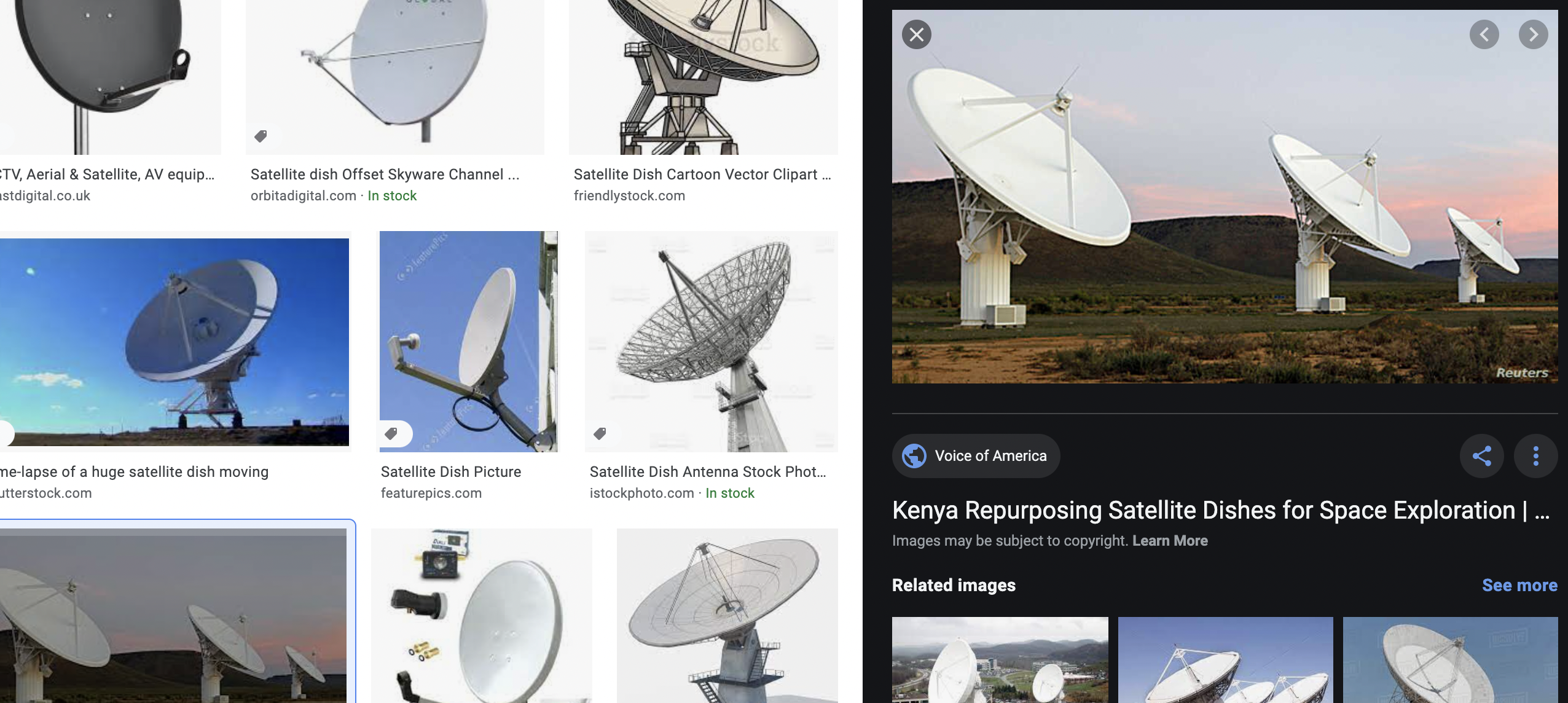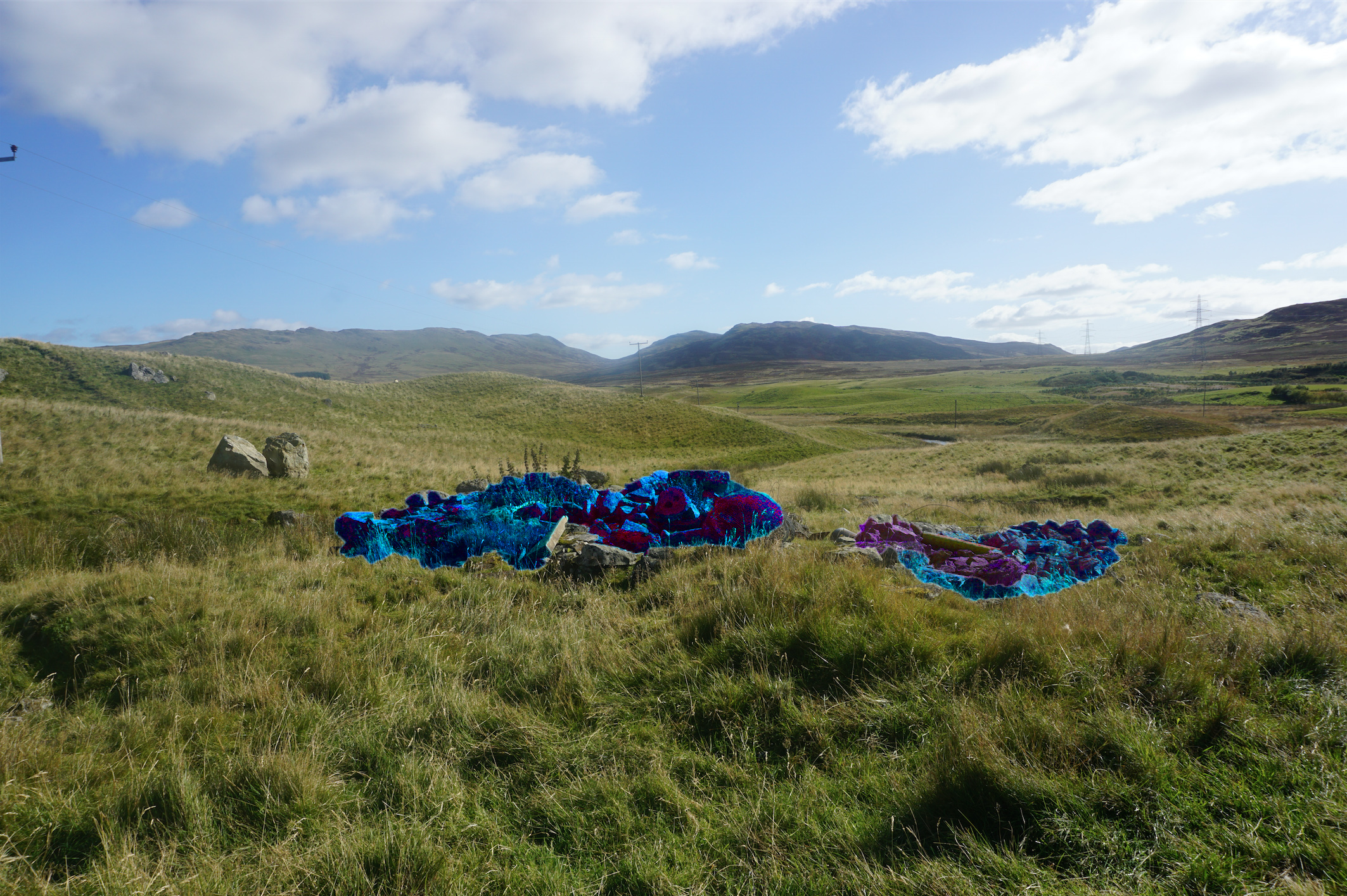Research log for Sites📝
Exploring hidden technologies and communicating with the landscape: ancient, modern and speculative.
Old work acoustic reflectors // Current work - illogical and fanciful acoustic “detectors and absorbers” trying to capture invisible frequencies, waves and technologies in the landscape.
✹Early Proposal (2020)
This proposal is for an outdoor installation exploring how we are conveyed through the landscape and interact with the idea of place, as well as how we navigate sites/place through digital and physical travel. The two proposed sites are Arrochar train station (located in Argyll) and Pitlochry station (located in Perthshire). These locations have been chosen due to the rich history of travel and technology that exist in these landscapes. These sites have also been selected as they are the locations I visited and have revisited digitally. Each location shall house a video installation along with a sound work. The videos will specifically relate to the locations in which they are situated and explore how we engage with sites both physically and digitally. This proposal will look at how we create our own narratives and sense of place by interrogating how we engage and interact with the geography and history of these places via our physical bodies, modes of transportation and technology. Alongside the video works there will be live sound of each site. The sound will be transferred from site 1 to site 2 creating a displacement of the captured sound.
✹Reflection on original proposal
Through this work I have become a digital flâneur, wandering streets late at night from the comfort of home, stalking the sites which I had planned to use: Arrochar and Pitlochry (places where I had spent a lot of time exploring in summer).
I began to focus on remote travelling by revisiting these sites, while reading about armchair, vicarious and digital travel, and the production of space and place myths. I separated these ideas out and considered these themes through video works, drawing and writing.
With Covid-19 and subsequent lockdowns, I decided I needed to get out the house again, away from research and the laptop. After a while, lockdown lifted and I could travel outwith my local authority area: I began by revisiting Neilston on the train, and taking fabric and recording equipment to the top of the iron age hill fort now surrounded by telephone pylons and wind farms.
I began to play with ways of interacting with invisible and hidden technology in the landscape. I decided to take these elements from my original proposal, such as the transference and displacement of sound, and use them for fun tasks to get working in the enviroment again.
This made me rethink the structure of the devices for capturing and displacing sound (depicted below as large domes propped up on legs) and what I wanted their purpose to be. I changed the design of these “sound absorbing and displacement devices” and decided that they needed to be flexible and transportable, made out of readily accessible materials that were weather proof, durable and cheap. This choice was made so that I could fabricate these outwith a studio space and take them out at a moment’s notice to locations when the brief window of opportunity presented itself.
Original mock up and idea of device for capturing and displacing the sound. Autumn 2020







✹Progression of Proposal
Within the landscape sits obsolete technology, layers of buried data. Abandoned hydroelectric projects, modern war technology, torpedo testing sites, Viking trails used for warmongering and raiding.
Arrochar was one of the places where I was able to go walking before lockdown, a short train journey from the city. A rain battered craggy landscape, separated by a few hills from Loch Lomond, which symbolises touristic Scotland. Conventional images of the Scottish landscape present it as wild, untouched and folkloric but Arrochar’s identity is constructed like most of rural Scotland, designed to fit into the narrative of a remote landscape sitting outwith time. But it is far from this, war technology and communications devices for civilian use are embedded within the landscape. Contained in the landscape is an ignored electro-nervous system.
Through looking at these technologies within the landscape, I intend to move away from the binary categorisation of nature and technology. I will seek to explore how this binarism is eroded and find the interconnections between these areas. By seeking to demonstrate the embeddedness of these electronic power sources within the landscape and how these have created a new, symbiotic ecological relationship between technology, identity and the land.
I have chosen to focus on the ideas mentioned above and flesh them out, I was getting stuck in a rut with the original proposal ideas and was no longer enjoying working on them in the depths of winter and rising covid rates. I feel transmitted sound work and ideas of travel are something I would like to revist post-covid and develop when able to do in a physical setting.
✹AIM
I want to bring in other elements from my work by looking at how we too are embedded within the landscape and interconnected through unseen and intangible sources such as temporalities, histories and identities, ideas that I am exploring in other experiments as well.
To do this, I will explore the spatiality of sites that I have previously visited, and later revisited via the internet, to demonstrate the interconnection between nature and technology. I will conduct sonic exploration of the electrical grid, exploring usually inaccessible characteristics through field recordings, alongside telephone pickup-mics to capture the sounds of electromagnetic waves (EMW).

Further Research and Reflection 🔬
I started to notice links between my practice and my older work. I had previously looked at obsolete military technology, such as sound mirrors, and merging these new technologies with ancient sound technology and archaeoacoustics. These are depicted below.






Looking back at pervious work I began to see connections to current work. I had previously looked at sound mirrors investigating how they possessed the same sonorous qualities as ancient acoustic structures and technologies which are embedded within the landscape.
I began thinking how fabrics could act as soft portable sound mirrors, as the mirrors also concentrated and amplifed sounds that were undetectable, having been engineered as early warning device by the military and worked to detect enemy aircraft approaching from across the English Channel by amplifying the noise of the engines. The sound mirrors soon became obsolete as quicker aircraft and increased ambient noise meant they were no longer effective and were soon forgotten.


Ancient sound techology in Scotland examples 🔗Aarron Watson’s photo of the dwarfie stane (top left). Own photos of Easter Aquhorthies recumbent stone circle with sonic properties.
Previously researching sites like these had allowed me to develop acoustic reflectors in the past. These sources I once again visted when starting to develop ideas for how to advance and refine the fabric.
🔗LINK TO SELECTED ARTIST AND RESEARCH🔗
Idea inspired by this research into military acoustics and archaeoacoustic designs -
Tarpaulin sheets, bundled and shoved into backpacks, along with a camera and recorder. These will be used as fictionalised devices to pick up/absorb EMW in the atmosphere - translating radio waves and communication technologies invisible to our ears and eyes into sound. I moved away from dome shapes as they amplify noise and project it outwards. In contrast, these sculptures are designed to attract EMW and convert them into audio. These devices capture all within the landscape, attracting and entrapping technologies, they look beyond the binarism of the landscape and imposed place identity, seeking the obsolete, destroyed, working and hidden.
A picture below of one placed inbetween pylons and an ironage fort.


Early Test 2020 Winter// seeing how sheets work in the landscape
Test 1 with phone Test 2 @ Neilston
DEVELOPMENT OF MATERIALS + STRUCTURE ⚑
Ambiguous and specutitive patterns:map grids, contours, cables, generators, radio waves, wires running through the landscape and lines drawn by planes ✈︎
Through playing with materials (tarpaulin) I again realised reoccuring themes in my work, such as the attraction of materials which, in my mind, sit on the cusp, such as metal which can be natural or manufactured and fabric which can be organic or highly synthetic. I love stuff that belongs in the inbetween that can be dually categorised and juxtaposed: hard and soft, metal and fabric, tangible and intangible, physical space and displaced sound, nature and industry, present and timelessness - all sitting within the realms of speculation. SKETCHES AND REFERENCES ⬇




Figuring out how I want to develop tarpaulin sheets - are they slick digital, manipulations of photos of the sites, hand made drawings or a mixture of both?






How would these be placed and perceived in landscape?
After futher investigation into how they would sit in the landscape, I felt the sheets shown above needed to have more of a structural element behind them. Taking the sheet out on tests, I felt it needed to be more textured and structured as the drawing and printing on sheets did not give the desired effect. From this I decided to test and use materials that were more reflective of the countryside, such as sleeping bags, military parachutes and hiking equipment, and sew into them, allowing the design process to unfold organically through making.
This also made me question how these sculptures would be placed in the landscape and engaged with by audiences and locals. For people unaware of the project will these works present themselves as defensive or obstructive structures? An odd military experiment? Or an ineffective tent in which to sit and rest?
To find out I created digital mockups of sketches and also took sculptures (last image) out into the environment and erected them: people from the road engaged with the work by honking horns and pulling in to gander.



Selection of sketchbook pages to work out how I want the final installation to look for proposal. I am working out if a shape will enhance the work or be or detrimental to it, as if it is given a formal shape the work will feel too literal and be too closely associated with existing objects in the landscape, such as tents or windsocks. Do sheets allow for more ambiguity and movement? Or can these two ideas be merged together?






